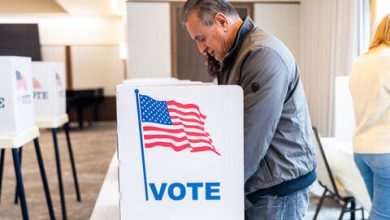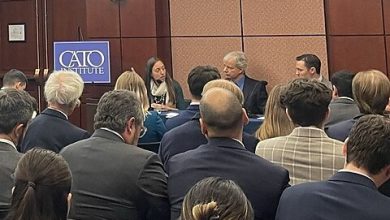The U.S. Economy Has Been Indeterminate Since the Financial Crisis

Recently, CMFA published an article and a working paper that detailed the Federal Reserve’s departure from rules‐based governance following the financial crisis of the late 2000s. As per academics and Fed officials, the era of rules‐based governance facilitated the Great Moderation – a stable economic period characterized by less volatile macro indicators such as inflation, output gap, and unemployment. In academic parlance, macroeconomists refer to this situation as determinacy. Despite conflicting evidence, the prevailing view is that the Fed facilitated the Great Moderation by establishing a determinate economic environment through rules‐based governance that focused on keeping inflation low. Previous CMFA papers had posited the question as to whether the Fed’s departure from this “successful” era of monetary policy may have instead led to indeterminacy. This article provides evidence that indeterminacy did occur during this period.
Determinacy is a feature of an economic system whereby outcomes such as inflation, output, etc., can be precisely determined based on a given set of initial conditions and policy rules. Under determinacy, the economy (as represented by a mathematical model) has a unique equilibrium outcome. In simple terms, under determinacy, the economy has only one possible resting state and is also stable with no large spirals or variability. Conversely, indeterminacy occurs when there are multiple possible equilibria that could result from the same initial conditions and policy rules. This state can create uncertainty in predicting the future state of the economy, as different equilibria may lead to significantly divergent economic outcomes. Simply put, the economy could end up in multiple possible states, some of which may be highly volatile, depending on how individuals form their expectations and make decisions.
Academics generally believe that a strong Fed response to inflation (a more than one‐to‐one increase in the target federal funds rate to inflation changes) can ensure a determinate system. This is known as the Taylor Principle. A greater than one‐to‐one response to inflation is deeply entrenched in the economic literature; most empirical macroeconomic studies simply assume determinacy and fix the Fed’s response to inflation at a number higher than one or use estimation techniques that entirely exclude the possibility of indeterminacy. This determinacy bias has serious implications for policy analysis because economic models (such as those used by the Fed) exhibit significantly different dynamics in an indeterminate system. Additionally, even approaches that account for indeterminacy, including seminal papers, fail to take consumers’ inflation expectations seriously. As noted above, expectations matter drastically when determining equilibrium selection. They should be included in the datasets used by empirical methods.
I utilize a simple macro model – connecting output gap, inflation, and the federal funds rate – to test the determinacy of the U.S. economy during the period when the Fed abandoned rules‐based governance (2009 through 2022). I use actual U.S. time series data for the three variables listed above as well as a measure of consumers’ inflation expectations – one year ahead inflation expectations collected from the Michigan Survey of Consumers.[1] I fit the macro model to the data using a Bayesian estimation procedure under both determinacy and indeterminacy to see which fits the data better.
I find that the model under indeterminacy significantly outperforms its determinate counterpart in fitting the data set. That is, the model under indeterminacy has a much higher “goodness‐of‐fit” versus determinacy. Goodness‐of‐fit values from Bayesian analysis are unlike the usual R2 value reported from regressions. Bayesian model comparison is conducted through marginal likelihoods which are then converted to an odds ratio (similar to betting odds) called the Bayes factor. The estimated odds of determinacy to indeterminacy are 1 to 1.5 x 1015 – making determinacy an extremely unlikely event. To understand exactly how unlikely, let us compare these odds to another extremely unlikely event – being struck by lightning. The odds of being struck by lightning are much higher in comparison: 1 to 1.5 x 104. In other words, the odds of being struck by lightning are significantly higher than the odds that the U.S. economy was determinate from 2009 through 2022.
Consequently, the probability that the U.S. economy was indeterminate following the financial crisis is nearly 100%. The (indeterminate) model with a 0.57 estimated inflation response coefficient fits the data better than the (determinate) model with a 1.13 coefficient estimate. The results confirm that the Fed did not target inflation in line with the Taylor Principle.
These findings raise an important question: how responsible is the Fed in keeping the economy determinate with a unique and stable outcome? If it is, as several academics and Fed officials have claimed, then they must answer why they did not conduct policy in a way that ensured the economy’s determinacy. If they are not responsible for keeping the economy determinate (as several recent studies are now finding), then the Fed’s reputation for stabilizing the economy is undeserved, and the public should question why an unelected governmental agency exerts such a high degree of influence over the political economy discourse if it is ineffective in maintaining prices or keeping the economy stable. A forthcoming paper will further examine the history of the Fed’s effectiveness in achieving determinacy.
The author thanks Jerome Famularo for providing research assistance during the preparation of this essay. For more information on the model, empirical methodology, and posterior distribution please click here.
[1] Respondents are asked the question: ‘By what percent do you expect prices to go up, on the average, during the next 12 months?’ The average of all responses is used as the measure for inflation expectations.





